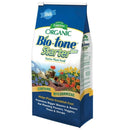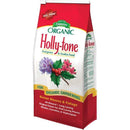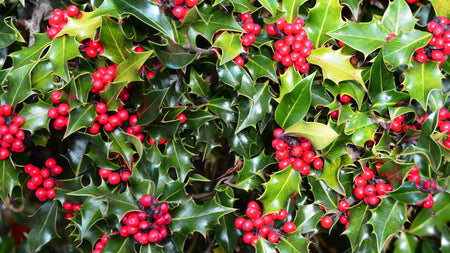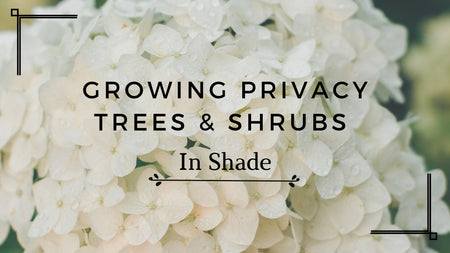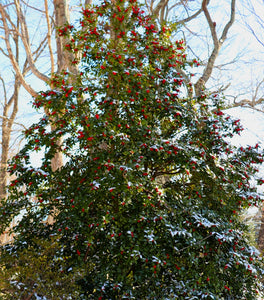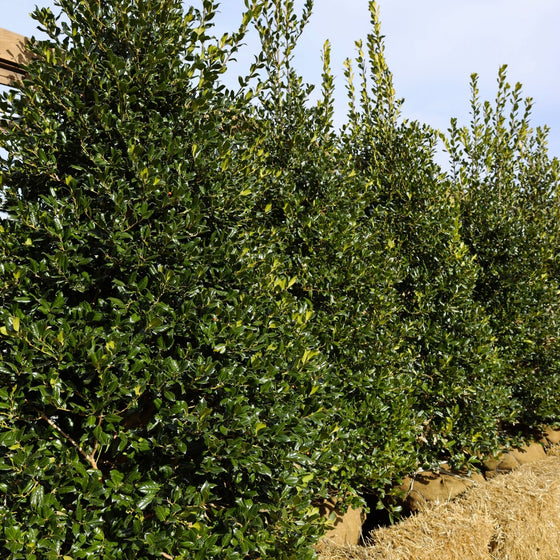
Images Depict Mature Plants
Nellie Stevens Holly Trees for Sale Online
Nellie Stevens Holly (Ilex x 'Nellie R. Stevens') is a widely admired evergreen shrub known for its robust growth and vibrant, glossy green leaves. This hybrid holly, resulting from a cross between Ilex aquifolium (English holly) and Ilex cornuta (Chinese holly), is celebrated for its dense, pyramidal shape and excellent adaptability to various climates and soils. Growing to heights of 15 to 25 feet and widths of 5 to 10 feet, Nellie Stevens Holly is a striking addition to landscape designs, serving as an ideal choice for privacy screens, hedges, or a specimen tree in garden settings. Its ability to thrive in USDA Hardiness Zones 6 through 9 and its drought resistance once established make it a durable and low-maintenance option for gardeners seeking four seasons of interest in their landscape.
The ornamental appeal of Nellie Stevens Holly is heightened by its prolific production of bright red berries, which appear in the fall and persist through the winter, providing a striking contrast against its dark, leathery leaves. These berries are visually appealing and attract various birds, adding an ecological benefit to its use in gardens. Though not particularly showy, the plant's flowers are a vital source of nectar for pollinators in the spring. Nellie Stevens Holly requires full sun to partial shade to flourish and benefits from regular watering during its first few growing seasons to establish a deep, extensive root system. It is relatively pest and disease-resistant, contributing to its appeal as a practical and ornamental choice for care-free gardening.
When planting Nellie Stevens Holly, it is essential to consider its growth characteristics and space requirements. Nellie Stevens Hollies should be planted approximately 5 to 6 feet apart for hedges and privacy screens, allowing them to fill in nicely, creating a lush, continuous barrier. This holly's fast growth rate (up to 3 feet per year once established) makes it a quick solution for those seeking immediate impact and privacy. Pruning is typically minimal but can be done in early spring to maintain its shape and encourage bushier growth. With its handsome foliage, decorative berries, and structural form, Nellie Stevens Holly is a dynamic and attractive choice for large and small landscapes.



| Hardiness Zone: | 6-9 |
|---|---|
| Mature Height: | 15 to 20 Feet |
| Mature Width: | 10 to 12 Feet |
| Sunlight: | Full sun to part shade |
| Foliage Color: | Dark green |
| Growth Form: | Upright pyramidal |
| Soil Conditions: | Very tolerant of most soil conditions |
How to Care for Nellie Stevens Holly
Be sure to read our planting instructions to ensure a healthy and happy plant for years to come!
How do I plant a Nellie Stevens Holly?
Planting Nellie Stevens Holly successfully involves selecting a location that receives full sun to partial shade to promote optimal growth and berry production. Ideal for USDA Hardiness Zones 6 through 9, this holly thrives in well-drained, slightly acidic soil, although it is adaptable to various soil types including clay and sandy soils. When planting, dig a hole twice as wide and just as deep as the root ball, enriching the surrounding soil with organic compost to boost nutrient availability. For a privacy hedge space the hollies 5 to 6 feet apart to accommodate their mature width, ensuring they have ample room to establish a strong root system. Regular watering, particularly during the first few years and in dry conditions, along with annual mulching, will help maintain soil moisture and overall plant health.
How often do I water my Nellie Stevens Holly Tree?
To help your Nellie Stevens Holly trees roots to establish, apply 2-3 gallons of water for each inch of trunk in diameter several times a week. Do not add water if the root ball is saturated. Follow this schedule for three-six months depending on the USDA Zone you live in.
Once established, apply 1 gallon a week to the rootball. You can discontinue irrigation once the deciduous trees in your area have dropped their leaves. You should try to moisten the soil 2-3 feet deep each time you irrigate.
Depending on the soil condition, you may need more or less water. Clay for instance is more difficult to saturate and requires adding the water more slowly, while sandy soil absorbs water quickly. Keep this in mind when watering your newly planted tree. It is best to water your tree with a soaker hose not a sprinkler.
What type of fertilizer is best for a Holly Tree?
Fertilizing Nellie Stevens Holly is key to supporting its vigorous growth and lush foliage. It's best to use a balanced, slow-release fertilizer formulated for evergreens or broadleaf shrubs, with an NPK ratio like 10-10-10 or a specialty holly fertilizer that includes iron and magnesium to enhance leaf color. The optimal time for fertilizing this holly is in early spring as new growth begins and again in mid-fall before the plant enters dormancy. This schedule helps ensure that the holly has the nutrients it needs during its active growth phases, which contributes to its overall health and stress resistance. Avoid fertilizing in late fall or winter, as this can stimulate new growth that might be damaged by cold weather. When applying fertilizer to Nellie Stevens Holly, lightly sprinkle the recommended amount around the base of the plant, extending to the drip line where the roots are most active. Water the area thoroughly after applying to help disperse the nutrients into the soil and reduce the risk of root burn. For young plants, a lighter application is preferable to encourage steady, healthy growth without overwhelming the plant. Regular monitoring of the soil's pH is also beneficial, as Nellie Stevens Holly prefers a slightly acidic environment; adjustments with sulfur or lime may be necessary based on soil test results to maintain optimal pH levels for nutrient uptake. These fertilization practices will help your Nellie Stevens Holly maintain its vibrant green foliage and robust growth year after year.
How do I shear Nellie Stevens Holly Trees?
Shearing is generally not needed however for a formal hedge start shearing when the tree reaches 3 or 4 feet in height, cutting only the sides, removing no more than 3 or 4 inches of growth. This will cause the tree to grow thicker. If you want the tree to grow tall don't cut the top leader, just shape the sides.
The best time to shear is after a new growth spurt finishes and the new growth begins to mature. Growth will go from a smooth, greasy texture, to a rougher snake skin look. Shearing twice a year is sufficient but only if needed. To keep your trees at a particular height requires cutting the central leader and then shearing all outside branches. This will control the tree for many years, but in time the tree will become too large to maintain.
Pruning can help make Nellie Stevens Holly more bushy. It is recommended that you disinfect your shears before you begin and even after each plant to prevent disease spread. You can prune dead or diseased limbs anytime of the year. To encourage thick bushy trees simply trim back the limbs that have outstretched the rest of the tree.








